Inspiration
Morocco’s Inner Beauty Revealed
The medieval medina of Fez
After a first morning spent touring Casablanca and its massive Hassan II mosque, we boarded our spacious, air-conditioned motor coach for the drive to Fez. The next day, our small group of 18 ventured into the souks of the famed medina of Fez, to experience a cornucopia of sights, sounds and smells. We walked along narrow, uneven alleyways, with daylight filtering down from above high gray walls, enjoying up-close looks at tables heaped with spices, dried fruits, fresh fish or silk and leather garments. They've been selling goods and working metal by hand in the medina since medieval times, and today's generation works in the same stalls their ancestors once did. And everywhere, there are cats, scrounging, prowling and sleeping — the unofficial mascots of the medina of Fez.
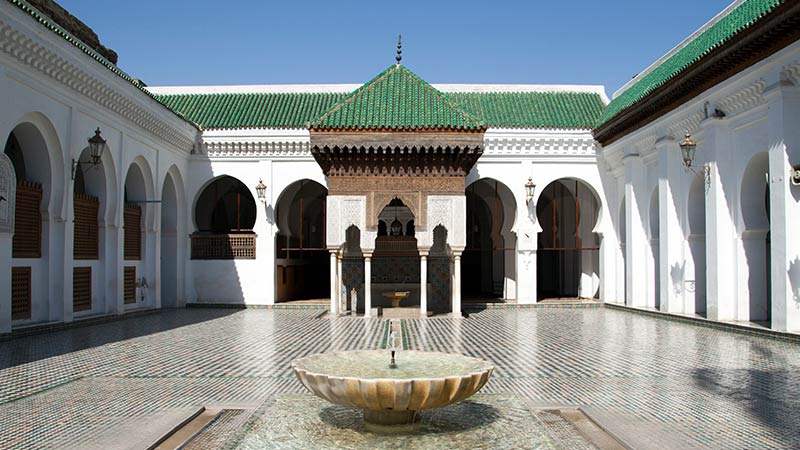
Centers of faith and learning
Led by our Resident Tour Director and his team, we were allowed to enter the Karaouine, the oldest continually operating university in the world. Founded in 859, virtually every surface of its quiet inner courtyard is decorated with highly detailed, delicately carved geometric patterns. Prohibited by their faith to use representational art such as icons, statues and paintings, Muslims employ geometric patterns to evoke spiritual meaning. Entering this graceful place that seemed hidden in the medina was like lifting the veil on an ancient culture that once kept outsiders at arm's length.
The times they are a-changin' … slowly
Joining us for dinner was Fatima Rhorchi, Ph.D., professor of linguistics at the University Moulay Ismail School of Law and Economics in Meknes. She was on hand to give us a frontline update on the progress of women's rights in Morocco. I'm certain more than a few of us were surprised to learn Moroccan women had only gained the right to vote about 35 years ago, and could only initiate a divorce as of about 10 years ago. Fatima assured us that women were making great strides in academics and government, thanks to their own determination to organize and the forward-thinking policies of the current monarch, King Mohammed VI.
Volubilis: Lost outpost of the Roman Empire
The next day, we started out for Meknes, stopping en route to explore the stunning ruins of the ancient Roman city of Volubilis. Impressive stone arches and columns, some tumbled down and others still standing tall against the vivid blue sky, invited us to take a step back in time. Here, floors of what were once family dwellings are still covered with decorative tile mosaics depicting mythological beings, such as Orpheus charming animals with his lyre and Hercules performing his legendary 12 labors. That so many of these tiles are still in place, let alone still exhibiting their colors after centuries of exposure to the elements, is astonishing. Morocco has provided settings for many classic movies, and Volubilis is no exception, having served as a stand-in for Carthage in a scene from Patton.
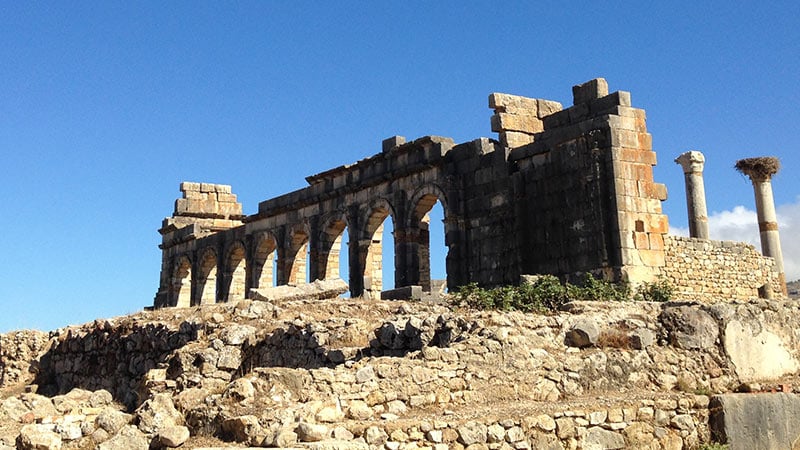
A&K’s gorgeous desert camp
For the much-anticipated desert camp portion of our luxury travels, we headed out into the Sahara in a group of 4x4s, rolling across the dusty landscape like a commando squad in an action-adventure flick.
When we came to a halt among the tall Erg Chebbi dunes, our "ships of the desert," and their attendants, awaited us. They properly outfitted us, wrapping our heads in scarves, Berber fashion, so that only our eyes remained uncovered. Mohamed demonstrated the proper method for mounting a camel. Then it was our turn. It's a bit of a shaky proposition for a first-timer, but once your body adjusts to the languid beast's shifting haunches, it starts to sort out.
We arrived in camp after about a half-mile ride and "checked in" to our large, airy Berber-style tents, where our luggage was already waiting for us. We were treated to a small glass of Morocco's signature mint tea, poured from a silver tea service, before transferring to a quiet spot out in the dunes for a relaxing Scenic Sundowner. Wines and snacks were served as we chatted about our camelback adventure and watched the setting sun cast shifting hues of orange and red across the desert. Returning to camp in the fading twilight, we gathered around a small bonfire for a live performance of traditional Berber folk music that combined vocalizing with dancing to rhythms produced on small drums and castanet-like qaraqibs. Then, while the fire still glowed, we adjourned to a nearby tent for a Moroccan dinner complimented by fine wines. We later slept in peace amid the silent dunes of the Sahara.

In the Jardin Majorelle, Marrakech
Our first full day in Marrakech included a visit to the Jardin Majorelle, a decorative garden of rare cacti and other desert plants, created by French painter Jacques Majorelle and later restored by fashion designer Yves Saint Laurent. As a long line of people stood outside the garden wall, waiting for their turn to enter, we arrived by horse-drawn carriage and were ushered in immediately.
We strolled the grounds at leisure, taking in the garden's peaceful atmosphere and appreciating the austere, distinctive beauty of cactus. The garden is also home to the Berber Museum, which houses a small but spectacular collection of authentic Moroccan garments, weapons and jewelry, dating to the 19th century and before. The craftsmanship and artistry, particularly of the women's dresses, had surely not been lost on Yves Saint Laurent, who arranged to have his ashes scattered in the garden, where a small monument marks his passing. In 2017, a museum devoted to the career of the prêt-à-porter pioneer opened near Jardin Marjorelle and showcases some of his greatest creations. The museum’s low profile, terra cotta exterior and elegant lines reflect not only the landscapes of Morocco but Yves Saint Laurent’s design sensibilities as well.
A flavorful farewell
On the last night of our journey together, we convened with our Resident Tour Director at a restaurant in Marrakech for an evening of traditional Moroccan food and music. In a dining room dimly lit for a relaxing mood, a guaoua band sang folk songs that struck a harmonious balance between a chant and a drone, plucking acoustic stringed instruments and slowly wobbling their heads, which caused the tassels of their fezzes to whirl in synch with the rhythm. We sipped wine and ate tagine, a style of food named for the low, round earthenware it is prepared in, featuring chicken or beef and a variety of vegetables cooked for a long time at low temperatures and spiced to be aromatic and mouthwatering. There was a heady atmosphere of conversation about special moments from the journey complemented by an unspoken appreciation of each other’s company. It served to remind me once more of the unexpected beauty to be found in Morocco; a place seemingly austere, until you give it a closer look, much like the desert itself.
This post was originally published on January 6, 2017. It has been updated with new information.





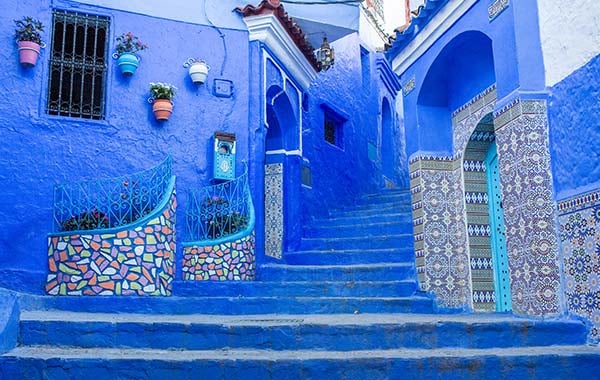

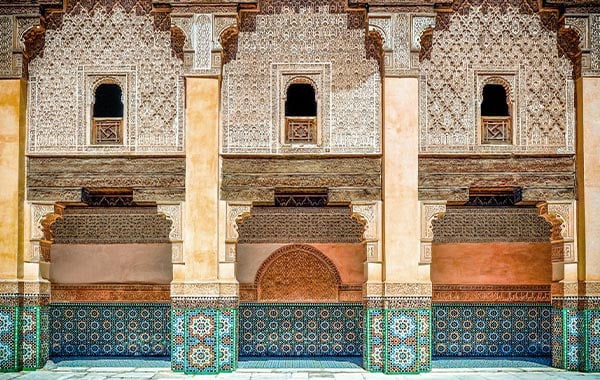

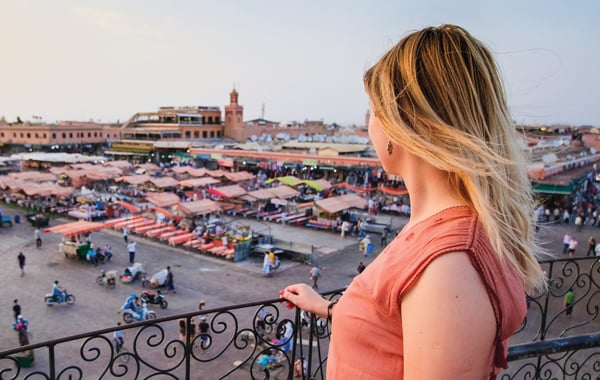


 The Americas
The Americas
 Europe, Middle East and Africa
Europe, Middle East and Africa Australia, NZ and Asia
Australia, NZ and Asia